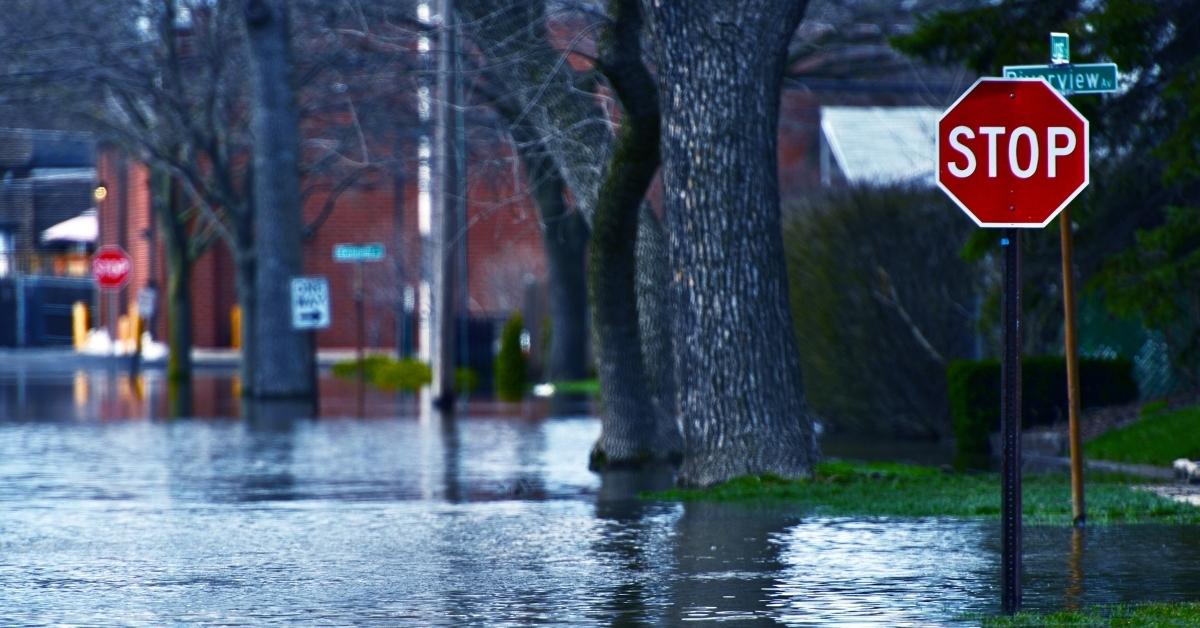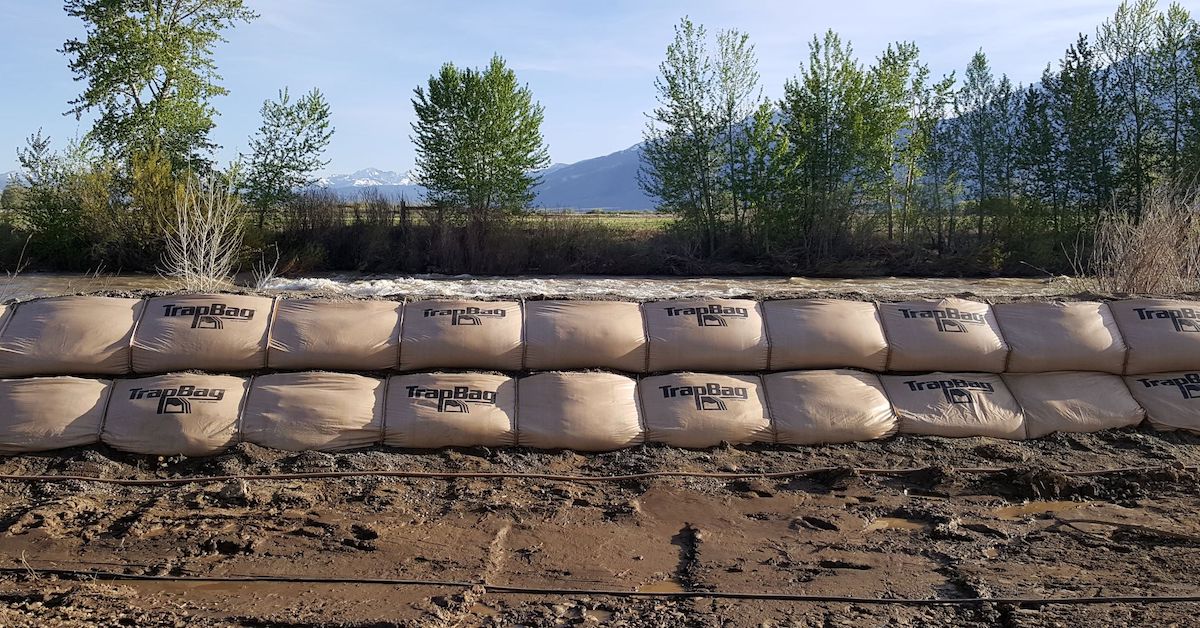Coastal communities come with natural beauty and typically temperate climates throughout the year. However, in addition to being just as susceptible to storms as any other town or city in the world, coastal communities are particularly vulnerable to flooding, and thus have greater need for flood protection barriers.
Use this introductory guide as a primer to learn more about what causes flooding most often in coastal communities, the type of barriers that are best to stop coastal flooding, and how to set up a temporary flood control levee.
What to Know About Coastal Flooding

1. Causes of Coastal Flooding
Whether you live along a lakeshore or a city on the coastline, there are several frequent causes of coastal flooding that residents and officials should know about.
Accumulated Rain
Just like anywhere else in the world, prolonged periods of rain can cause flooding in coastal communities. However, a singular long rainstorm isn’t the only issue that causes floods, necessarily. Even receiving some rain every single day for two or three weeks in a row can cause flooding in coastal communities.
Aging Levees
Levees are excellent for flood control—if they’re new or being properly maintained. However, since levees are typically built with public funding, the level of maintenance, care, and monitoring they receive on a regular basis can vary greatly depending on the agencies involved.
There are countless instances of flood control levees breaking or giving way during flood emergencies. Oftentimes, the levees in question are older, have experienced significant wear and tear since their installation, and may have fallen into disrepair without being addressed.
Severe Storms
A common cause of coastal flooding is severe storms. These include rainstorms or gales being driven in from the ocean or across the lake, and they can drive large waves into houses, roads, and other community structures.
Sometimes, a severe storm doesn’t even need to be visible from the coast to cause coastal flooding. Offshore hurricanes, tropical storms, and even swells can cause flooding along highways and walkways in coastal communities.
Flash Flooding
During periods of prolonged, heavy rainfall, spillways and stormwater drainage canals can become overwhelmed and breach their banks. This can cause localized flooding within a matter of minutes to hours, tainting drinkable water and damaging the homes closest to these water outlets.
2. Effects of Flooding in Coastal Communities
It seems counterintuitive at first—why would flooding be an issue for coastal communities, when the lake or ocean is typically pretty good at regulating itself? In actuality, coastal flooding can cause widespread problems if not mitigated properly. Here are just a few of the consequences:
- Property damage: Both freshwater and seawater can wreak havoc on a building’s siding. There are also plenty of horror stories from San Francisco to Miami about the catastrophic damage seawater can cause to a building’s foundation. Plus, there are plenty of stories from homeowners along the Great Lakes who woke up to find ice jutting through their patio door.
- Shoreline erosion: Coastal flooding can also cause beaches to erode and wash away, making your community less beautiful and more likely to be damaged during squalls and storms throughout the year.
-
- Threats to wildlife: Flooding in and near coastal communities can cause habitat loss, destroy nesting sites for birds and reptiles like sea turtles, and harm local fish populations, harming the entire ecosystem.
- Dangers for humans: Floodwater can wash away coastal highways, damage sewage systems, create standing water as a breeding ground for mosquitoes and other pests, and sweep away unsuspecting residents or motorists who try to cross a flooded road.
Flood Protection Barriers for Coastal Communities
Flood prevention and protection are top priorities for some coastal communities, especially as climate change, seasonal shifts in water levels, and residential development in vulnerable areas all make flooding more likely.
Some of the options coastal towns have elected to use include everything from dams and dikes to seawalls and offshore breakwaters. However, during emergency situations, temporary flood control levees can be particularly effective for mitigating flood damage.
Levees as Barriers to Stop Coastal Flooding
Most permanent levees are raised earthen embankments built alongside rivers and inlets to protect the homes and other structures closest to the water. Since inlets are among the most likely places to experience flooding in costal areas, they are a common sight in these coastal neighborhoods.
Temporary levees for flood control, however, can be placed virtually anywhere in a community, including at the edges of the beach and along vulnerable or low-lying streets. Provided that they are built high enough to withstand the expected amount of flooding, they can be excellent flood barriers for coastal communities trying to protect residences and buildings near beaches and inlets.
Flood Bag Levees
For centuries, traditional sandbag levees have helped to mitigate flooding, with mixed results depending on how large the barrier was and how much time the community had to build it before evacuating.
However, as flooding has become more frequent and more severe, coastal communities have come to rely on solutions like flood bag levees to prevent water from causing property damage.
Some flood bags are inflated with air or more water to create a levee for flood control. Others still use sand as their filler material, but gravel is another common option. Regardless of how the flood bag is filled, one of the largest deciding factors in whether it will withstand the flooding is the shape and height of the levee.
DIY Flood Barriers with TrapBag®
TrapBag is a multipurpose system that can be used to create a watertight flood barrier to protect homes, roadways, and more. It’s used for everything from beach recovery and restoration in Kenya to emergency flood protection measures in Grand Rapids, Michigan. Each cell in a 50-foot section of barrier is watertight, allowing the land and property on the other side to stay safe and dry.
Compared to the traditional sandbag method, it’s far easier to set up temporary levees with TrapBag. In fact, where it would take an entire team several hours to pour sand into the sandbags and stack them high enough to build a proper levee, TrapBag can be set up in a fraction of the time.
Furthermore, traditional sandbags are shapeless and don’t typically stand upright on their own. TrapBag barriers, however, are pentagonal and designed to remain standing. Each cell in a barrier is independent from its neighbors, though they all draw strength from one another. Therefore, unlike normal sandbags, if one bag is compromised, the entire barrier won’t give way.
It also takes far more sandbags or other traditionally shaped flood bags to create an adequate levee than it does with TrapBag, making it a less wasteful option with even better results than its predecessors.
Using TrapBag to Make a Flood Control Levee
A TrapBag levee for flood control can be assembled with a few simple steps, using just one person with the right equipment. Here is a written walkthrough for setting up a TrapBag barrier:
- Open the barrier packaging. The entire TrapBag barrier will be folded up in its packaging, accordion style. Stretch the barrier out to its desired length, up to 50 feet.
- Fill the cells. This can be done either manually with shovels and buckets, or all at once with a dump truck or bulldozer. Sand, concrete, or washed gravel make the best filler materials for TrapBag.
- Place or stack the barrier where needed. Filled TrapBags can be set as freestanding levees, set against existing structures for reinforcement, or stacked on top of each other
In emergency situations, every moment counts. Because they can be filled en masse and require 40% less filler material to complete than a sandbag wall of the same size, TrapBag is the best choice agencies and organizations can make to protect their communities and property ahead of a flooding event.
Prevent Flood Damage in Coastal Communities
There are newer, more efficient ways to build temporary levees for flood control and protect coastal communities from damage. To see how TrapBag can make a difference in your next emergency, call us 24/7 at (239) 674-6611, or contact us through our website today.




